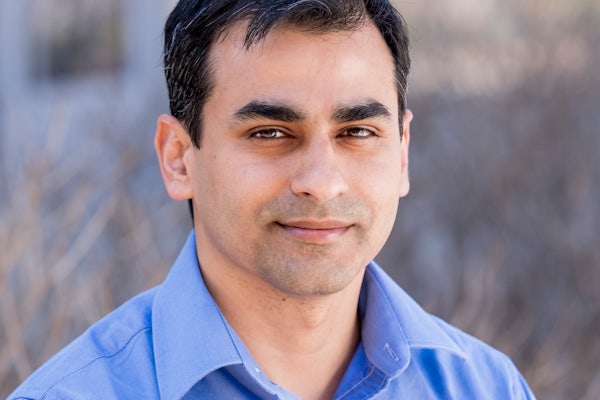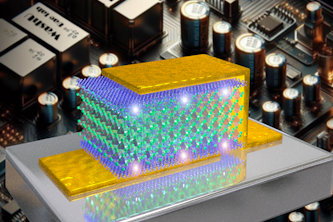Mishra to develop novel ferroelectric semiconductors with NSF CAREER Award
The new class of materials would combine the best properties from each

Most electronic devices have one or more interfaces between layers of a semiconductor material to which, alternatingly, negatively and positively charged impurity atoms, or dopants, have been added. These layers selectively allow the movement of negatively charged electrons and their positively charged counterparts, holes, for the devices to work; but these interfaces can reduce the devices’ efficiency.
Rohan Mishra, assistant professor of mechanical engineering & materials science in the McKelvey School of Engineering, aims to avoid these interfaces by discovering and developing a new class of semiconductor materials with a five-year, $588,795 CAREER Award from the National Science Foundation. The NSF CAREER awards support junior faculty who model the role of teacher-scholar through outstanding research, excellence in education and the integration of education and research within the context of the mission of their organization. One-third of current McKelvey Engineering faculty have received the award.
Mishra, a materials scientist, plans to use theory, computations and machine learning to predict novel ferroelectric semiconductors exhibiting the best properties of each, such as band gap, carrier mobility and polarization. These semiconductors would have a built-in electric field that will allow the selective movement of electrons and holes across them. Moreover, the direction of this built-in electric field or polarization, can be reversed with an external potential, thus giving control over the movement of the charge carriers. By eliminating the interfaces, these new semiconductors would allow for more effective and efficient electronic devices that could be used to generate and store energy as well as in storing and processing information.
Mishra will work with collaborators at WashU and elsewhere, to have these materials synthesized. His group will then characterize the atomic and electronic structure of these new materials using electron microscopy.
These new materials could lead to more energy-efficient memory storage devices and be used in microelectronic devices or in sensors, Mishra said.
The new work is based on recent research from Mishra’s lab that successfully predicted new ferroelectric semiconductors, including tin oxynitrides, that have potential applications in photovoltaics and photocatalysis, published in Chemistry of Materials in 2020. In another earlier work, they revealed that a metastable phase of gallium oxide, which is a popular semiconductor for power electronics, to be a ferroelectric. This opened up its application for high-frequency communications devices. This work was published in Applied Physics Letters in 2018 and made it into the journal’s list of highly cited, highly read research in semiconductors.
As part of the CAREER Award, Mishra will use augmented reality to look at the 3D structures of the new materials.
“I propose to illustrate the three-dimensional atomic structure of materials with and without defects using an augment reality-based app and build it up to explain more complex processes, such as how atoms vibrate and conduct heat and sound,” Mishra said. “Once we have the app developed, we can show high school students and teachers the structures on the app, to hopefully engage and excite them about materials science.”
Mishra said he would also use the app in the Introduction to Materials Science class that he teaches in which students sometimes have difficulty grasping crystal structures, such as the difference between graphite and diamond. He also will design a new course on characterizing the atomic structure of materials using transmission electron microscopy.



